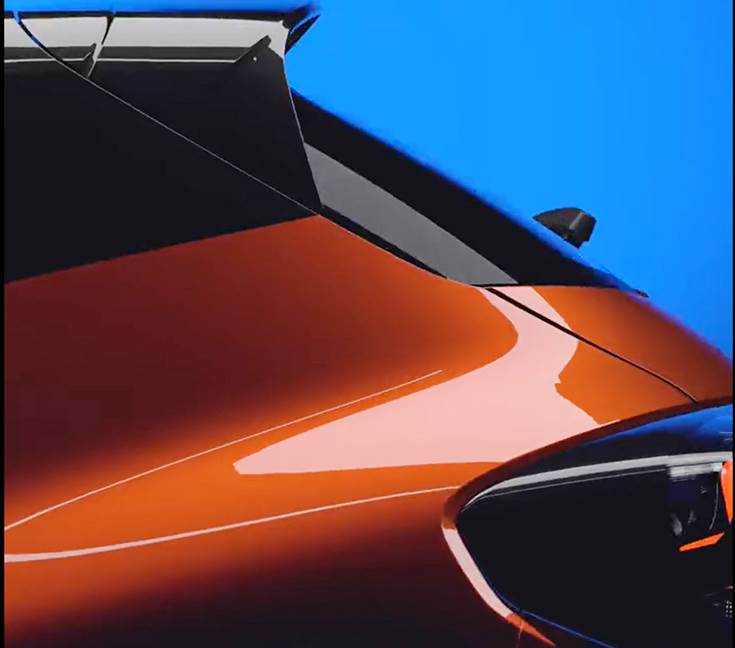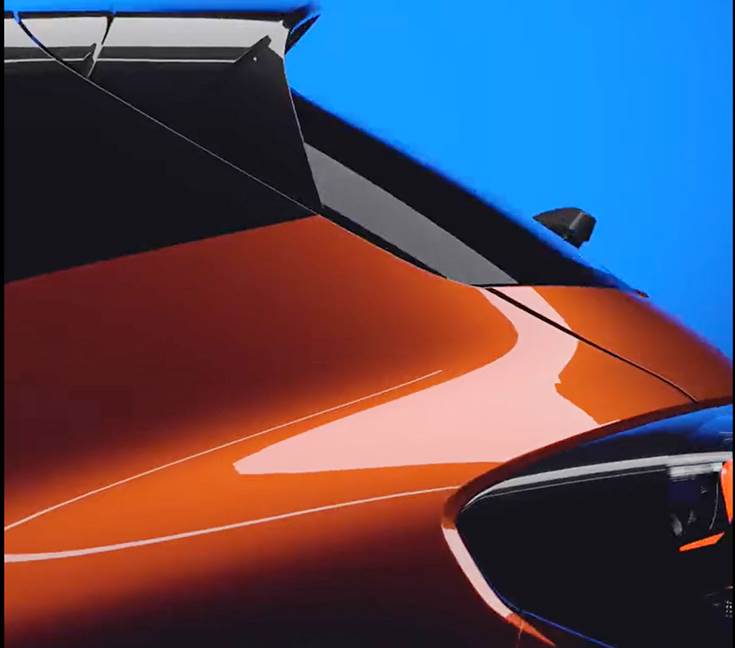Renault has revealed the name of the vehicle that marks the start of its new international product offensive: Renault Kardian.
The all-new Renault Kardian, which will reinforce Renault’s international footprint, is set to soon make its debut in the Latin American market, following on from the Alaskan and the Oroch, before going on sale in other countries across the world.
Other than the name, Renault has released no other details about the new model albeit a teaser video offers a glimpse into the new SUV’s tail-light, hatch and spoiler.

The future urban SUV, which is set to first roll out in the South American market, required an evocative name that conjures up both strength and agility while containing internationally clear consonants. But what does the name mean, and what does it bring to mind? Sylvia Dos Santos, model-naming Strategy Manager within the Renault Global Marketing Department, breaks it down by syllable and by letter, as well as the ideas and associations arising from the genesis of this frontier‑crossing model.
A customer’s relationship with a car always begins with the name – what it makes them think and feel. In the SUV and crossover segment, vehicle names tend to evoke strength and agility. At Renault, a number of models have names that begin with a firm ‘K’ sound: Koleos (2008), Captur (2013), Kaptur (2016) Kadjar (2015), Kwid (2015) and Kiger (2021). As the first in a future international range, the all-new Renault Kardian is taking its place in this line of strong and distinctive vehicle names.
Nevertheless, the roots of the Renault Kardian’s name come from the English language. On first listen, the name evokes the word ‘guardian’, symbolising protection and strength. Its strong consonants – K, R and D – reinforce that impression. But the name also conjures another strong image. Sylvia explains: “What’s interesting about the Renault Kardian is how it evokes dynamic agility. It makes you think of cardio – sport, momentum and adrenaline.”
But the word’s softer sounds also bring other ideas to the fore. Sylvia says, “The way it’s structured around two ‘A’s, Kar-dian, alludes to the vehicle’s security.”
Lastly, you can even hear the word “car” in the first syllable of Kardian – hard to find better symbolism! “This vehicle illustrates Renault’s Renaulution globally, with a vehicle name that calls to mind technology, security, and plenty of driving pleasure and agility,” adds Sylvia.
Finally, how is Kardian pronounced? “We decided to pronounce it the French way because Renault is a French brand, a bit like the French touch,” concludes Slyvia.
Kardian part of Renaulution growth strategy
In January 2021, the Renault Group had unveiled a major new strategic plan, the ‘Renaulution’, designed to spark the firm’s recovery and future growth. It includes 24 new vehicles by 2025 including a major expansion in Renault’s electric vehicle range, a widening of budget brand Dacia’s line-up and the reinvention of Alpine as a fully electric performance brand.
The Renaulution builds on the group’s ongoing recovery and growth plan and will feature three phases. The ‘resurrection’ phase will run until 2023 and focus on increasing the firm’s margins and cash generation while the ‘renovation’ phase, which runs until 2025, will include a focus on renewing the line-ups of the group’s key brands, in order to boost profitability.
Once those goals are achieved, the ‘revolution’ phase will run from 2025 onwards and switch the firm’s business model to a focus on “tech, energy and mobility”, with an emphasis on electrification and new mobility schemes.
The Renault Group says that, under the new plan, it will shift its focus from maximising its market share and sales to profitability, the ability to generate revenue and its investment effectiveness, with the goal of reducing investments in research and capital expenditure and boosting its operating margin by 2025.
ALSO READ:
Renault India plots hybrid models as part of multi-powertrain strategy
